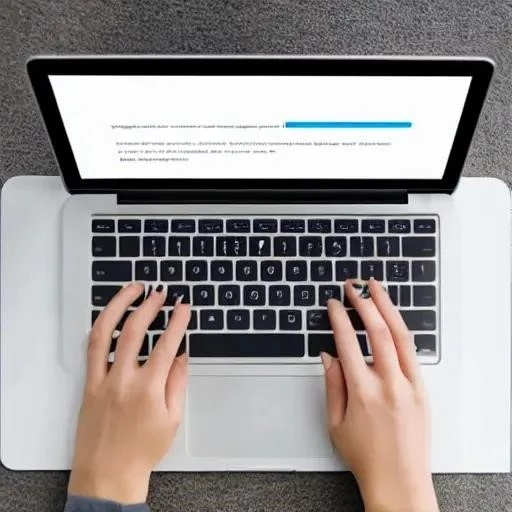In an era increasingly defined by digital transformation, the healthcare landscape has undergone a seismic shift, embracing remote work models with unprecedented vigor. Clinicians, administrators, and support staff are now routinely collaborating across vast distances, delivering care and managing complex patient data from diverse locations. While this paradigm offers remarkable flexibility and expanded access to care, it simultaneously introduces a formidable challenge: the accurate, efficient, and secure documentation of patient encounters. Traditional transcription methods, often tethered to physical offices or cumbersome manual processes, simply cannot keep pace with the dynamic demands of a distributed workforce, leading to bottlenecks, delays, and potential compromises in patient safety.
Enter the game-changer: cutting-edge Medical Transcription Software tailored specifically for remote teams. This isn’t merely about converting speech to text; it’s about orchestrating a symphony of advanced artificial intelligence, natural language processing, and robust security protocols to empower healthcare professionals. By seamlessly integrating into existing workflows, these innovative platforms are not just streamlining administrative tasks but fundamentally reshaping how medical documentation is perceived and executed, promising a future where efficiency and accuracy are no longer mutually exclusive ideals but everyday realities for remote practitioners.
| Category | Description / Key Information |
|---|---|
| Topic Focus | Medical Transcription Software for Remote Healthcare Teams |
| Core Function | Automated conversion of spoken medical dictations into written clinical documentation. |
| Key Technologies | Artificial Intelligence (AI), Natural Language Processing (NLP), Machine Learning (ML), Speech-to-Text (STT) Engines. |
| Primary Benefits | Enhanced efficiency, reduced administrative burden, improved accuracy, faster turnaround times, cost savings, HIPAA compliance, increased clinician satisfaction. |
| Challenges Addressed | Documentation backlogs, clinician burnout, data security risks in remote settings, inconsistent documentation quality, interoperability issues. |
| Future Outlook | Deeper EHR integration, real-time transcription, predictive analytics, multi-modal input processing, voice biometrics for security. |
| Relevant Link | Association for Healthcare Documentation Integrity (AHDI) ౼ (For industry standards & best practices) |
The remarkable capabilities of these next-generation transcription solutions extend far beyond simple dictation. Leveraging sophisticated AI algorithms, modern software can understand and accurately transcribe complex medical terminology, varied accents, and even distinguish between multiple speakers in a clinical conversation. This isn’t just a convenience; it’s a critical leap forward, drastically reducing the need for extensive manual editing and freeing up valuable time for physicians and nurses. Imagine a scenario where a physician, having concluded a remote telehealth consultation, merely speaks their notes, and within moments, a perfectly formatted, legally compliant clinical record is generated, ready for review and integration into the Electronic Health Record (EHR).
For remote teams, the advantages are incredibly profound. By integrating insights from AI, these platforms ensure data consistency across all practitioners, regardless of their physical location. This centralized, digitized approach minimizes errors that often creep in during manual transcription or when different individuals interpret notes differently. Furthermore, the inherent flexibility of cloud-based medical transcription software means that healthcare providers can access and manage documentation from anywhere, at any time, securely and efficiently. This accessibility is pivotal for remote workers, enabling them to maintain productivity and adhere to strict deadlines, ultimately enhancing patient care by ensuring timely and accurate information flow.
Security, a paramount concern in healthcare, is meticulously addressed by leading software providers. Adhering to stringent regulations like HIPAA in the United States, these platforms employ robust encryption, multi-factor authentication, and secure data storage protocols, safeguarding sensitive patient information against unauthorized access. “The shift to remote care was inevitable, but secure and accurate documentation remained our Achilles’ heel,” states Dr. Anya Sharma, a leading expert in health informatics. “Advanced medical transcription software has not just patched that vulnerability; it has transformed it into a core strength, allowing us to scale our remote operations confidently and responsibly.” This expert perspective underscores the transformative power these tools wield.
Looking ahead, the trajectory for medical transcription software is even more exhilarating. We are rapidly approaching a future where these systems will not only transcribe but also proactively flag potential inconsistencies, suggest relevant diagnostic codes, and even assist in generating patient summaries for follow-up care. The integration with existing EHR systems will become even more seamless, creating a truly unified digital ecosystem where data flows effortlessly, reducing administrative overheads and allowing clinicians to dedicate more time to their patients. This evolution promises an unparalleled level of operational fluidity, cementing medical transcription software as an indispensable cornerstone of modern, forward-thinking healthcare. The journey towards a more efficient, accurate, and accessible healthcare system, powered by intelligent technology, is not just a distant dream—it is unfolding right now, with remote teams leading the charge.






